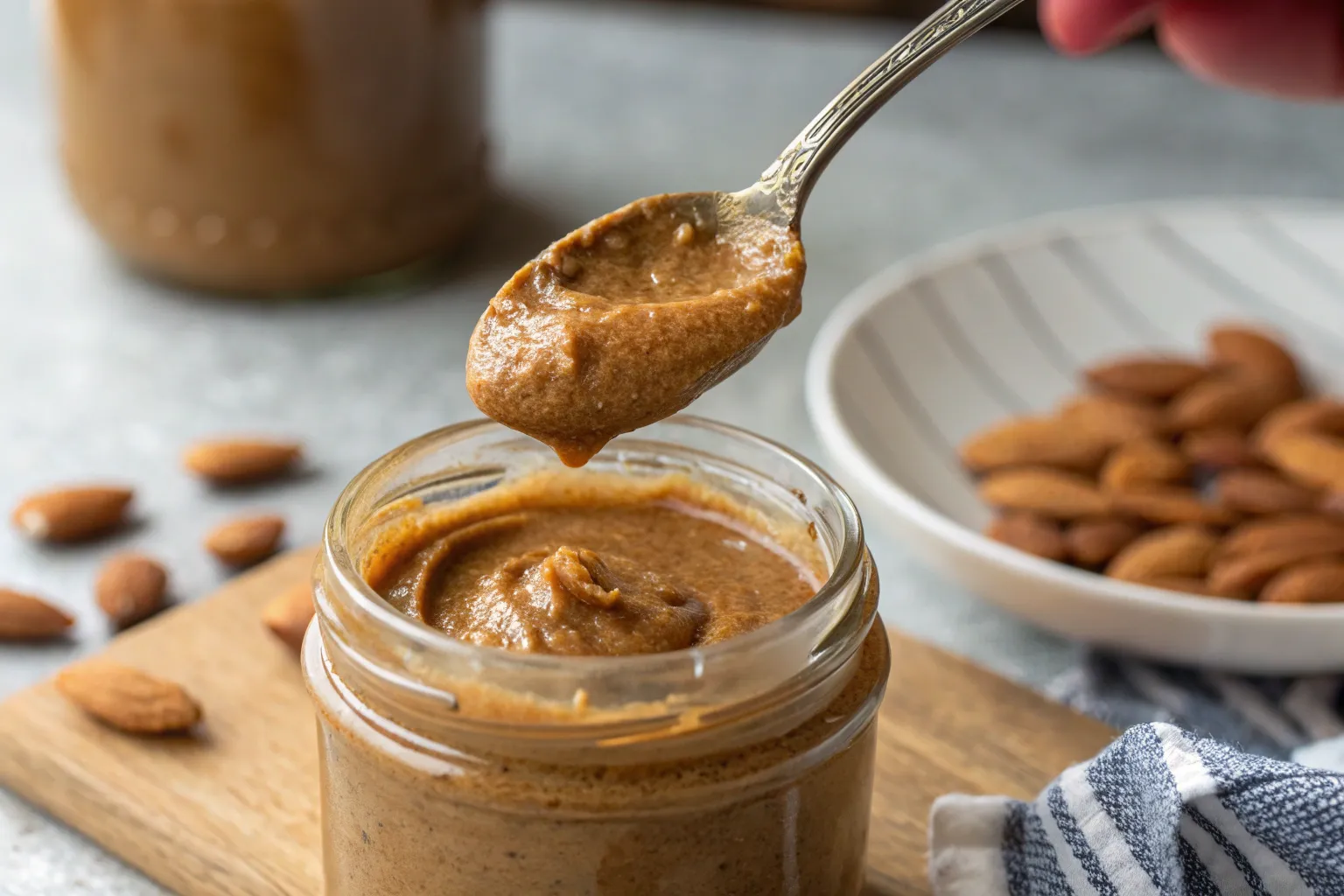Homemade Almond Butter Recipe in a Blender | Easy Nut Butter Ideas

Creamy, rich, and irresistibly nutty, this Homemade Almond Butter is a pantry staple you’ll want to make on repeat. With just one ingredient—roasted almonds—and a high-speed blender, you can whip up a batch of smooth almond butter in under 10 minutes. It’s healthy, versatile, and perfect for spreading, baking, or adding to smoothies. Say goodbye to store-bought versions and hello to a fresh, homemade spread you can feel good about.
Why You’ll Love This Recipe
If you’ve never made nut butter at home, this simple almond butter recipe is a game changer. Not only is it cost-effective, but it also lets you skip added sugars, oils, and preservatives found in store-bought jars. The flavor is richer, the texture is customizable, and the process is surprisingly satisfying. Whether you like it silky smooth or with a bit of crunch, this blender method gives you full control.
Ingredients You’ll Need
This recipe couldn’t be easier, with just one base ingredient and optional add-ins for extra flavor. Here’s what you’ll need:
- Roasted almonds (unsalted, whole or sliced)
- Optional: pinch of salt, a drizzle of honey or maple syrup, or a splash of vanilla extract
- Optional add-ins: cinnamon, coconut oil, chia seeds, or cacao powder
How to Make Almond Butter in a Blender

Making almond butter in a blender is quick, easy, and totally hands-off once you get going. Just be sure to use a high-speed blender or food processor that can handle nuts. Here’s how to do it:
- Add roasted almonds to your blender (about 2–3 cups for best results).
- Blend on high, pausing every minute or so to scrape down the sides.
- At first, it will be coarse and powdery—keep going! The oils will release and turn it creamy.
- After 5–10 minutes, you’ll have smooth, spreadable almond butter.
- Stir in any optional flavorings or sweeteners and blend again briefly.
- Transfer to a clean, airtight jar and store at room temperature or in the fridge.
Tips for Success
Getting the perfect almond butter texture takes a little patience. Here are a few helpful tips to get smooth, spreadable results every time:
- Roast your almonds beforehand if using raw—it helps release oils faster.
- Let the blender rest if it overheats; making nut butter generates heat.
- For a runnier butter, add a small amount of coconut or neutral oil toward the end.
- Don’t add water—liquid can cause the butter to seize or spoil quickly.
Variations to Try
Once you’ve mastered the base recipe, you can experiment with fun and flavorful variations. Here are some easy nut butter ideas to mix things up:
- Maple Cinnamon Almond Butter – Add maple syrup and a dash of cinnamon
- Vanilla Coconut Almond Butter – Add shredded coconut and vanilla extract
- Chocolate Almond Butter – Add unsweetened cacao powder and a touch of honey
- Spicy Chai Almond Butter – Add cardamom, cinnamon, ginger, and clove for a chai-inspired twist
- Crunchy Style – Pulse in chopped almonds at the end for texture
What to Eat with Almond Butter
Homemade almond butter is incredibly versatile and works with both sweet and savory dishes. Here are some delicious ways to enjoy it:
- Spread on toast, bagels, or pancakes
- Stir into oatmeal, yogurt, or smoothies
- Use as a dip for apples, bananas, or celery
- Add to baked goods like muffins or cookies
- Swirl into chia pudding or overnight oats
Healthier Alternatives
Almond butter is already a nutrient-dense, heart-healthy option, but here are some ways to make it even more wholesome:
- Use raw almonds to preserve more nutrients (though blending takes longer)
- Skip sweeteners and flavor with natural spices like cinnamon or nutmeg
- Mix in chia, flax, or hemp seeds for added omega-3s and fiber
- Make it a blend with cashews or walnuts for variety
Kid-Friendly Tips
Almond butter is a great snack for kids when prepared safely and served appropriately. Make it more appealing with these fun tips:
- Add a drizzle of honey and a sprinkle of cinnamon
- Serve with apple slices, pretzels, or mini rice cakes
- Use it as a filling for DIY nut butter sandwiches or stuffed dates
- Let kids decorate toast with almond butter, fruit slices, and seeds
How to Store Homemade Almond Butter
Homemade almond butter stores well and lasts for weeks with proper storage. Here’s how to keep it fresh:
- Store in an airtight jar in the refrigerator for up to 3–4 weeks
- Stir before using if it separates (natural oils will rise to the top)
- Avoid contamination—always use a clean, dry spoon
- You can also store at room temp for 1–2 weeks, if your home isn’t too warm
Conclusion
Making almond butter at home is quick, rewarding, and delicious. With just a blender and a bag of almonds, you can enjoy a creamy, nutritious spread that’s free of additives and full of flavor. Try out different variations, store it for the week, and use it in everything from breakfast to dessert. Pin this recipe, share it with friends, and start blending—homemade almond butter is just minutes away.

